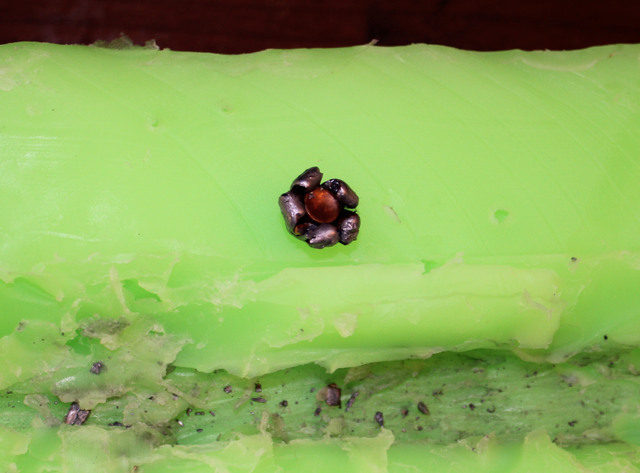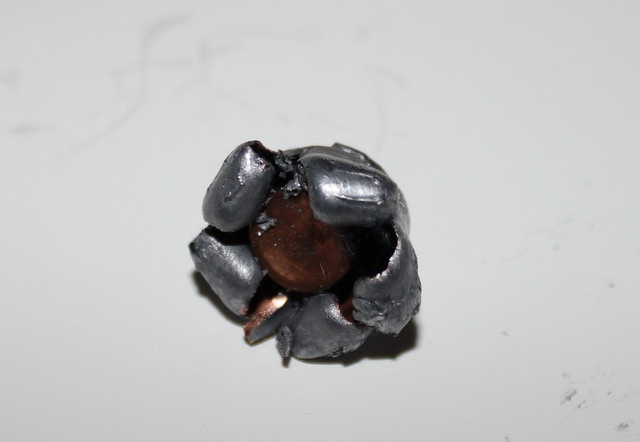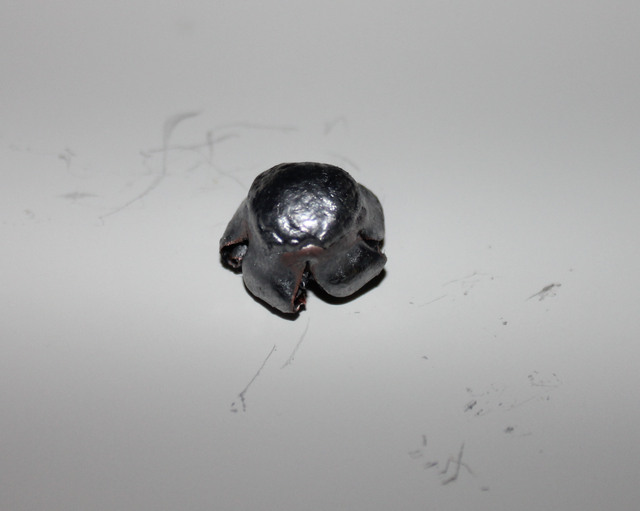http://site.cuttingedgebullets.com/
Holy cow! $65.00 for
50 165 grain 30 cal bullets? They gotta be kidding! Actually they will be out of business unless they reduce the price. I would consider that cost for 100
IF I needed a lead free bullet.
As for expansion testing, I've been doing that for over 10 years. Water filled milk jugs work quite well, simply pick the expanded bullet from the last jug it penetrated.
Recently I got some test media from this outfit;
http://www.thebullettesttube.com/
They are in limbo right now, just the website is still up, but they don't answer email. Brownells may still have some product in stock yet, but don't count on them to have the new tubes available or the molds to re-cast the media.
The media is a wax type of expansion media. It's exact composition is a secret, but it's a good representation of muscle tissue in a mammal. Here's a couple of bullets I recovered;
That's a home cast 200 gr. hollow point lead boolit I make. Notice the wound cavity. The test tube is 4" X a little over 8" long. This type of test media lets you SEE the wound cavity, You can even measure it by filling with measured water BEFORE splitting it along the bullet path.
Above, speer deepcurl bonded bullet from a 30-06. Weight retention was right at 90%.
Bonding makes all the difference. They're actually a plated bullet, plating makes the copper adhere/stick-to the lead core.




